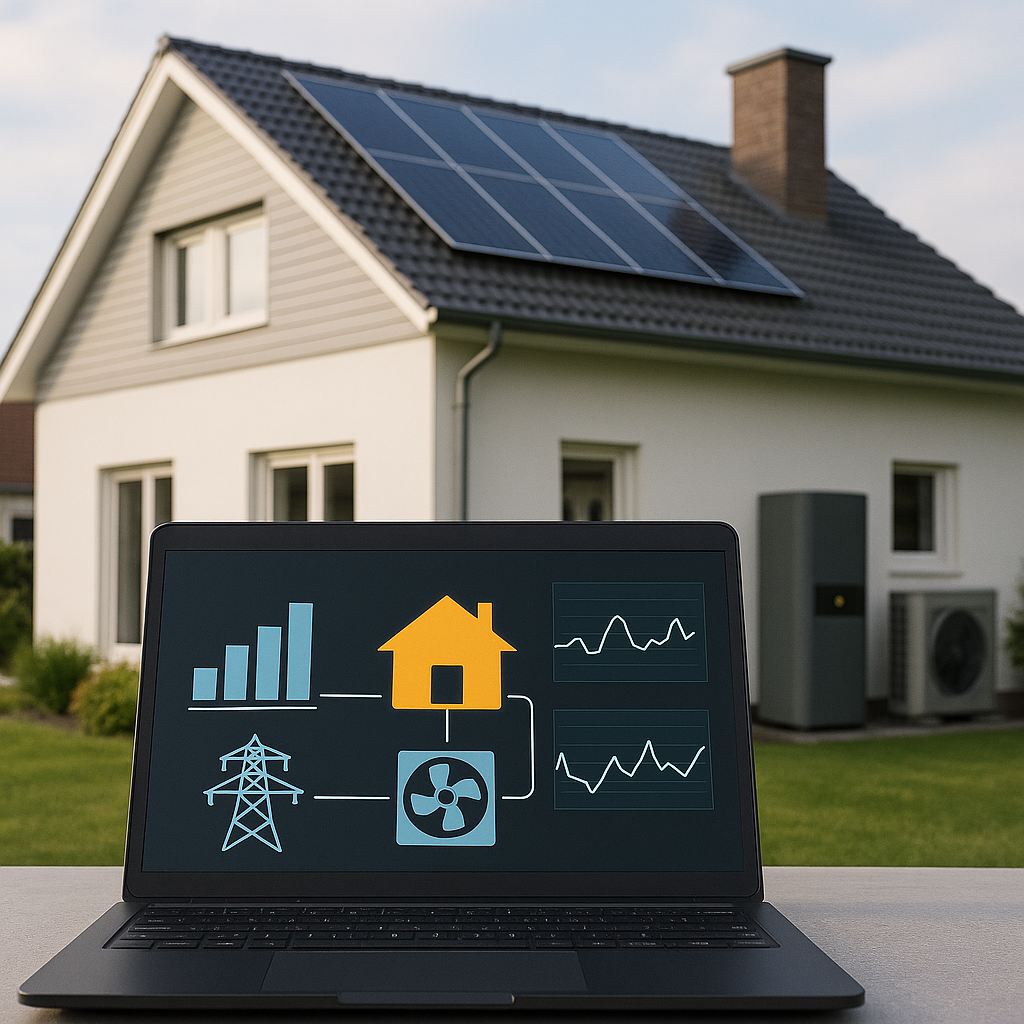AI can slash costs and emissions in multi-energy systems
The RL model delivers almost the same cost and efficiency outcomes as the MILP optimizer, but with dramatically lower computational needs. Over the testing period, the MILP approach achieved a 10.06% reduction in energy costs compared to a baseline “no flexibility” scenario. The RL agent closely followed, achieving an 8.78% reduction, underscoring the potential for near-optimal operation without the heavy computational overhead that MILP models typically demand.

The integration of artificial intelligence into energy management is rapidly advancing, and new research is reshaping the conversation around optimized energy systems. The study, published in Energies (2025), demonstrates how deep reinforcement learning (RL) can deliver near-optimal results in managing energy flows within residential communities, all while significantly reducing computational demand.
The findings of the study "Deep Reinforcement Learning Approaches the MILP Optimum of a Multi-Energy Optimization in Energy Communities" open the door to practical, real-time applications of AI-based controllers for smarter, more sustainable energy use in homes and small energy communities, signaling a pivotal shift toward scalable and adaptive energy optimization.
How AI is transforming residential energy management
The study investigates a real-world three-home energy community equipped with a 12 kW geothermal heat pump, a 6 kW resistance heater, a 1120-liter thermal energy storage (TES) tank, and rooftop photovoltaic (PV) panels linked to the grid. The thermal storage system provides approximately 26 kWh of usable capacity, creating the flexibility required for strategic load shifting and optimization.
The research compares two approaches: the traditional mixed-integer linear programming (MILP) model, widely regarded as the gold standard for optimization accuracy, and a deep Q-network reinforcement learning agent. The RL model is trained on a full year of 15-minute resolution data, including thermal demand, PV production, electricity market prices, feed-in tariffs, and CO₂ intensity, to autonomously learn how to manage the TES charging and discharging cycles.
By simulating real conditions over a year-long dataset, the researchers tested whether RL could match or approach the precision of MILP in driving down energy costs and emissions while increasing the efficiency of local energy use.
Performance: Near-optimal control with reduced complexity
The RL model delivers almost the same cost and efficiency outcomes as the MILP optimizer, but with dramatically lower computational needs. Over the testing period, the MILP approach achieved a 10.06% reduction in energy costs compared to a baseline “no flexibility” scenario. The RL agent closely followed, achieving an 8.78% reduction, underscoring the potential for near-optimal operation without the heavy computational overhead that MILP models typically demand.
In terms of environmental performance, the RL system slightly outperformed MILP by reducing carbon emissions by 4.63% compared to 4.01% with MILP. This improvement was primarily driven by increased self-consumption of PV-generated electricity and higher levels of self-sufficiency, ensuring that a greater portion of locally produced energy was used within the community rather than exported to the grid.
Perhaps most significantly, the RL agent required only 22% of the computation time needed by the MILP system during real-time operations. This computational efficiency could enable real-world deployment of AI-driven energy controllers that can make rapid adjustments to dynamic grid conditions, without requiring the processing power of more complex optimization algorithms.
Implications for energy communities and the grid
As distributed energy resources such as rooftop solar panels, heat pumps, and energy storage systems become increasingly common in residential settings, the ability to coordinate their operation intelligently is critical. Traditional optimization methods like MILP, while precise, are often computationally intensive and difficult to scale for real-time use across multiple sites.
By demonstrating that reinforcement learning can approach the performance of MILP while operating efficiently in real time, this study offers a pathway to democratize advanced energy management systems. Energy communities, homeowners, and grid operators can potentially deploy these RL models to reduce costs, lower emissions, and improve grid stability, all while using relatively modest hardware and without the need for continuous human oversight.
The research also sheds light on operational behaviors that drive these results. Both MILP and RL models prioritized using locally generated solar energy to meet immediate demand, especially when feed-in tariffs were lower than the cost of grid electricity. However, the RL controller exhibited slightly better performance in maximizing the use of stored thermal energy, reducing reliance on auxiliary heating systems during peak demand periods and improving overall system efficiency.
Future directions and opportunities
The study highlights several areas for further exploration and refinement. One of the main challenges in reinforcement learning is the training phase, which requires substantial data and computational resources. The authors note that future work should focus on accelerating the training process and improving model adaptability to account for variations in energy prices, weather patterns, and user behavior.
Additionally, integrating RL controllers with Internet of Things (IoT) platforms could unlock even greater potential for responsive and predictive control. By incorporating real-time sensor data and advanced forecasting models, future systems could adjust not only to immediate conditions but also to anticipated changes, such as shifts in weather or market prices.
Scalability is another key area of focus. While this research demonstrated effectiveness in a small three-home community, applying the same approach to larger energy communities or urban microgrids will require further testing and refinement. Standardizing interfaces between AI controllers, energy management systems, and utility platforms will be critical for broader adoption.
Furthermore, there are promising opportunities to align RL-based optimization with broader sustainability and policy goals. By enhancing energy self-sufficiency and reducing emissions, these systems can support decarbonization targets and contribute to more resilient and sustainable energy infrastructures.
- FIRST PUBLISHED IN:
- Devdiscourse










